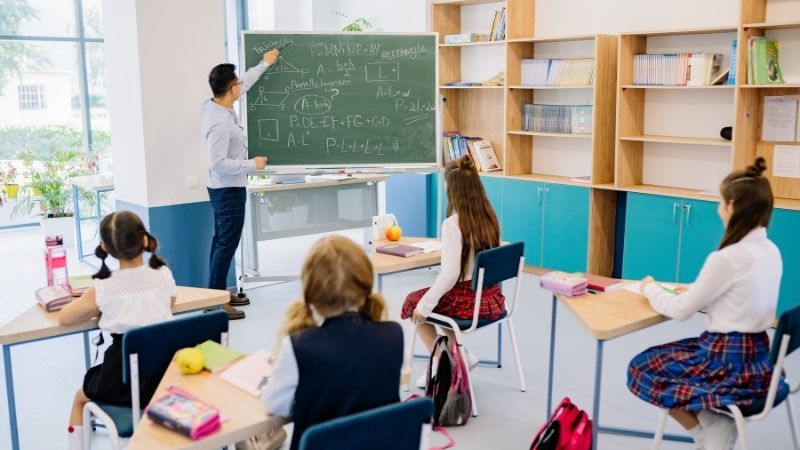
In the pursuit of fostering healthy champions, schools play a crucial role in promoting health and nutrition among students. By providing nutritious school lunches, cultivating healthy habits, integrating wellness education into the curriculum, encouraging regular physical activity, and delivering age-appropriate nutrition lessons, schools can effectively nurture the overall well-being of their students.
This article examines how these strategies can be implemented to create an environment that supports and empowers students to make informed choices about their health and lead healthier lives.
Key Takeaways
- Nutritious school lunches and cultivating healthy habits support physical and cognitive development in students.
- Providing access to balanced meals and promoting healthy eating habits have long-term benefits for overall health and prevent chronic diseases.
- Integrating wellness education into the school curriculum promotes health and well-being among students.
- Encouraging regular physical activity and delivering age-appropriate nutrition lessons contribute to the development of healthy habits that can be carried into adulthood.
The Importance of Providing Nutritious School Lunches
Providing nutritious school lunches is essential for promoting the health and well-being of students. School lunch programs play a crucial role in ensuring that students receive the necessary nutrients to support their physical and cognitive development. Research has consistently shown that access to nutritious meals at school positively impacts academic performance.
A well-balanced meal can enhance concentration, memory, and problem-solving skills, enabling students to perform better in class. In addition, healthy eating habits developed during childhood have long-term benefits for overall health and can help prevent chronic diseases later in life.
By offering wholesome food options that are low in added sugars, unhealthy fats, and excessive sodium, schools can contribute to the establishment of lifelong healthy habits among students.
Furthermore, these programs also address issues of food insecurity by providing vulnerable children with regular and reliable sources of nutrition.
Cultivating Healthy Habits in Students
This discussion will focus on the importance of daily exercise routines and promoting balanced meal choices in cultivating healthy habits in students.

Daily exercise routines play a crucial role in maintaining physical fitness and overall well-being. By encouraging regular physical activity, schools can instill healthy habits that can benefit students throughout their lives.
Additionally, promoting balanced meal choices is essential for providing the necessary nutrients for growth and development while also teaching students about making informed food choices.
Daily Exercise Routines
Regular physical activity plays a crucial role in promoting the overall health and well-being of students in schools. Engaging in team sports not only provides numerous benefits for students but also creates a culture of physical activity.
Team sports encourage collaboration, leadership skills, and discipline while improving cardiovascular fitness, muscular strength, and coordination. Additionally, participating in team sports can enhance mental health by reducing stress levels and improving mood.
To create a culture of physical activity within schools, it is important to offer a variety of sports options that cater to different interests and abilities. Providing adequate facilities, equipment, and trained coaches is essential for students to fully engage in these activities.
Transitioning into the subsequent section about promoting balanced meal choices, it is important to establish an integrated approach that combines regular exercise routines with nutritious meals for optimal student health and well-being.
To ensure a well-rounded approach to student health, it is important to consider the promotion of balanced meal choices alongside regular exercise routines. Interactive mealtimes can play a crucial role in this regard.

Schools can create an environment that encourages students to make healthy food choices by offering a variety of nutritious options and involving them in the decision-making process. This can be achieved through activities such as taste testing sessions and cooking demonstrations, where students learn about different food groups and their benefits.
In addition to promoting balanced meals, schools should also focus on promoting healthy snacks. Offering fruits, vegetables, and whole grain options as snack choices can help students develop healthier eating habits while providing essential nutrients for their growing bodies. Educating students about the importance of choosing nutritious snacks over sugary or processed alternatives can empower them to make informed decisions when it comes to their diet.
Integrating Wellness Education Into School Curriculum
Integrating wellness education into the school curriculum offers a structured and systematic approach to promoting health and well-being among students. This integration provides numerous benefits but also poses certain challenges.
The effectiveness of wellness education in schools can be measured through various means, such as:
- Surveys: Administering surveys to gauge students' knowledge, attitudes, and behaviors related to health and wellness.
- Academic Performance: Analyzing academic performance data to determine if there is a correlation between wellness education and improved student outcomes.
- Health Indicators: Tracking changes in health indicators like body mass index (BMI), blood pressure, or fitness levels over time.
- Program Evaluation: Conducting formal evaluations of the wellness education program's implementation, content, and impact on student well-being.
While integrating wellness education may face obstacles such as limited resources or resistance from stakeholders, its potential for enhancing student health warrants further exploration.
Transition sentence: In addition to integrating wellness education into the curriculum, encouraging regular physical activity is another crucial aspect of nurturing healthy students.
Encouraging Regular Physical Activity for Student Health
Incorporating physical activity into the daily routines of students can contribute to their overall well-being and promote a healthier lifestyle. Regular physical activity has numerous benefits for students, including improved cardiovascular health, enhanced mental well-being, and increased academic performance.

Engaging in physical fitness activities not only helps students maintain a healthy weight but also builds strong bones and muscles. It can reduce the risk of developing chronic conditions such as obesity, diabetes, and heart disease later in life.
Encouraging student engagement in physical activity can be achieved through various strategies such as providing opportunities for structured exercise during school hours, incorporating active breaks between classes or lessons to allow movement, and promoting extracurricular sports or recreational activities.
Schools should also focus on creating a supportive environment that values physical fitness by providing adequate facilities and resources for exercise. By prioritizing regular physical activity in schools, we can help our students lead healthier lives both now and in the future.
Delivering Age-Appropriate Nutrition Lessons
This discussion will focus on the delivery of age-appropriate nutrition lessons, specifically exploring two key points: interactive nutrition activities and engaging lesson plans.
Interactive nutrition activities are effective tools for engaging students in their learning process by promoting hands-on experiences and active participation.
Engaging lesson plans, on the other hand, provide structured frameworks that facilitate student understanding and retention of important nutritional concepts.
Interactive Nutrition Activities
Interactive nutrition activities in schools provide students with engaging opportunities to learn about healthy food choices and develop essential skills for making informed dietary decisions. These activities, which often take the form of nutrition games and interactive learning experiences, offer a practical and enjoyable way for students to explore the world of nutrition.

Here are four benefits of incorporating interactive nutrition activities into school curricula:
Increased engagement: Interactive activities capture students' attention and make learning about nutrition more exciting and memorable.
Practical application: Students can apply their knowledge immediately by participating in hands-on activities that involve planning meals or analyzing food labels.
Skill development: Through interactive nutrition activities, students can develop critical thinking, problem-solving, and decision-making skills related to healthy eating.
Long-term impact: By engaging in these activities at a young age, students are more likely to internalize healthy habits that they can carry into adulthood.
Engaging Lesson Plans
The previous subtopic discussed the importance of interactive nutrition activities in promoting health and nutrition among students. Building on that, the current subtopic focuses on engaging lesson plans that further enhance student participation in learning about healthy habits and nutrition.
Engaging lesson plans are essential in capturing students' attention and fostering an active learning environment. By incorporating interactive elements such as group discussions, hands-on activities, and real-life examples, educators can create meaningful connections between theoretical knowledge and practical applications.

These engaging activities not only make learning enjoyable but also encourage active participation from students. Through these lesson plans, students can develop a deeper understanding of the importance of healthy eating habits and how they contribute to overall well-being.
School policies play a crucial role in promoting health and nutrition by setting guidelines for nutritious food options, establishing physical activity requirements, and implementing wellness education programs. These policies serve as a framework for schools to create an environment that supports the overall well-being of their students.
School nutrition policies: By implementing specific guidelines for school lunches and snacks, such as offering whole grains, fruits, and vegetables while limiting sugary drinks and unhealthy snacks, schools can ensure that students have access to nutritious meals throughout the day.
Student wellness initiatives: Schools can also promote healthy habits by incorporating wellness initiatives into their curriculum. This may include teaching students about proper nutrition, encouraging regular physical activity through physical education classes or after-school sports programs, and providing resources for mental health support.
Collaborating with parents and the community: By involving parents and the community in supporting healthy students through open communication channels, collaborative decision-making processes regarding school policies can be established.
Collaborating With Parents and the Community to Support Healthy Students
Collaboration with parents and the community is essential in establishing a supportive environment for students' well-being. When schools actively engage parents and the wider community, they can create a comprehensive approach to promoting health and wellness among students.
Collaborating with parents allows schools to gain valuable insights into students' individual needs and preferences, which can inform the development of effective health initiatives. Involving the community also enhances the resources available to support healthy lifestyles, such as access to recreational facilities or partnerships with local organizations.

Frequently Asked Questions
How Can Schools Ensure That the School Lunches They Provide Are Nutritious?
To ensure that school lunches are nutritious, schools can follow guidelines set by national health organizations, prioritize the inclusion of fruits and vegetables, limit added sugars and unhealthy fats, provide whole grains, and regularly evaluate the nutritional quality of meals.
What Are Some Effective Strategies for Cultivating Healthy Habits in Students?
Effective strategies for cultivating healthy habits in students include role modeling and creating a supportive environment. Role modeling involves showcasing healthy behaviors and choices, while a supportive environment provides resources and opportunities for students to engage in healthy activities.
How Can Wellness Education Be Integrated Into Different Subjects in the School Curriculum?
Integrating wellness education in different subjects can be achieved by incorporating health-focused projects. Engaging students in hands-on activities, such as creating healthy meal plans or conducting scientific experiments on nutrition, can effectively promote health and well-being.
What Are Some Practical Ways to Encourage Regular Physical Activity Among Students?
Encouraging regular physical activity among students can be achieved through various practical strategies. These include creating fitness initiatives, incorporating physical activities throughout the school day, providing access to sports facilities, and promoting active lifestyles through extracurricular programs.
How Can Schools Determine the Appropriate Level of Nutrition Education for Different Age Groups of Students?
Determining age-appropriate nutrition education involves assessing the impact of different educational approaches on students at various developmental stages. This evaluation helps schools provide practical and informative nutrition lessons that cater to the needs and capabilities of each age group.
 Careers in EducationElementary EducationHigh School EducationEducational TechnologyTeaching StrategiesSpecial EducationPrivacy PolicyTerms And Conditions
Careers in EducationElementary EducationHigh School EducationEducational TechnologyTeaching StrategiesSpecial EducationPrivacy PolicyTerms And Conditions
